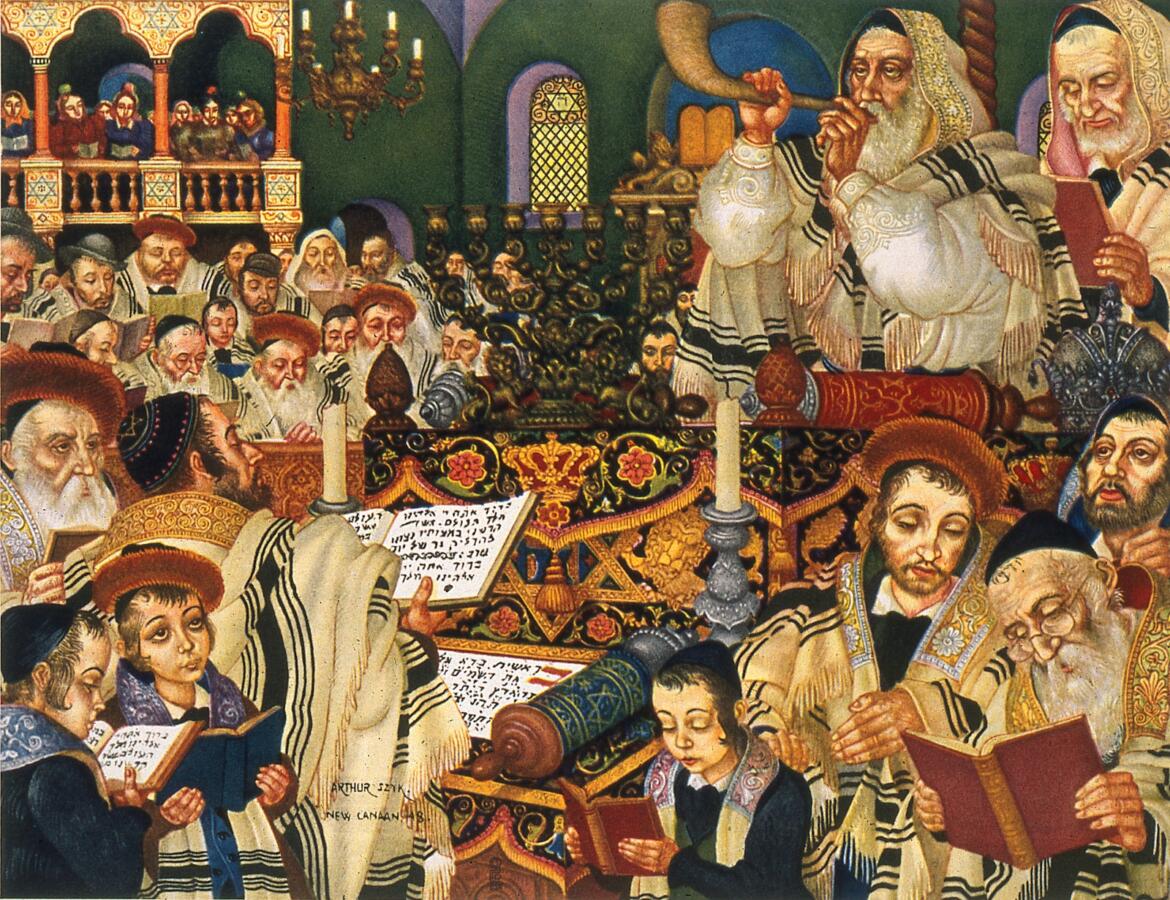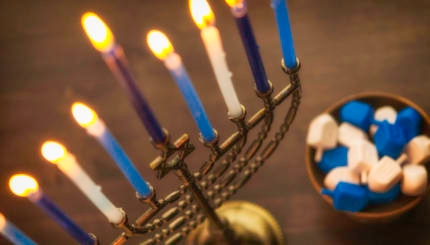The biblical, rabbinic, and modern categories of Jewish holidays indicate the historical period during which these festivals came to be established events in the Jewish calendar. These categories prove helpful in understanding the development and meaning of the various holidays, but categorization has limitations as well: As is often the case with Jewish law and rituals, what is established in one period evolves during another, taking on new meanings and new customs.
Biblical Holidays
The biblical holidays are obviously those that are mentioned in the Hebrew Bible, such as Purim, which is mentioned in the Book of Esther. There are two chapters in the Torah that list the major biblical holidays, Leviticus 23 and Deuteronomy 16. These include the three pilgrimage festivals, Rosh Hashanah, and Yom Kippur.
The three pilgrimage festivals of Passover (Pesach), Shavuot, and Sukkot commemorate important events in the foundational narrative of the Jewish people, yet their origins are to be sought in ancient agricultural celebrations tied to the land of Israel.
These holidays are called pilgrimage festivals because in ancient times all Israelite males were supposed to travel to the Temple in Jerusalem to make animal sacrifices at these times. Passover celebrates the Exodus of the Israelites from Egypt and is characterized by a special banquet — called the Seder (“Order”) — that is rife with symbolic foods that highlight aspects of the story as found in the Bible and later Jewish tradition. Shavuot celebrates the receiving of the Torah on Mount Sinai, a post-biblical designation of this festival.
The celebration of the holiday was expanded in medieval times to include an all-night study session that was meant to symbolize the ancient Israelites’ sleepless anticipation of receiving the Torah. Sukkot celebrates the wandering of the Israelites in the desert for 40 years when, according to the Hebrew Bible, the intimate and close relationship between God and the Jews was like that of a husband and wife, or even a parent and child.
Rosh Hashanah and Yom Kippur also have their origins in the Torah. In the latter case, the Torah describes the Day of Atonement as a day on which the Israelites are to practice self-denial (later understood to mean fasting) and to seek expiation for their individual and communal transgressions.
In fact, Leviticus 16 describes an elaborate ritual in which two goats would be sacrificed for the expiation of the sins of the Israelites–one would be slaughtered and the other sent off to die in the wilderness. The High Priest would symbolically place the collective sins of the Israelites upon this scapegoat, which would then be sent off into the desert to symbolize the removal of the people’s sins.
The case of what is today known as Rosh Hashanah is different: The Torah offers scant details on what this holiday is supposed to signify. The Torah describes the first day of Tishrei as “the day of teruah [trumpet blasts]” (Numbers 29:1), and leaves it at that. It was the rabbis of later centuries who imbued the festival with the meaning we ascribe to it today. Rosh Hashanah as the new year, as the Day of Judgment, and as the beginning of 10 days of penitence are all entirely rabbinic in origin.
Likewise, the Torah mentions a holiday attached to the end of Sukkot, without detailing what this day was to be about: “On the eighth day [of Sukkot] you shall observe a sacred occasion…it is a solemn gathering…” (Leviticus 23:36). This holiday became known as Shemini Atzeret, and later, the second day of this festival also evolved into Simchat Torah. Though not mentioned by name in the Talmud, there is a reference to the haftarah (prophetic reading) of the second day of Shemini Atzeret (Megillah 31 a). It is only later that second day of this festival of Shemini Atzeret became known as Simchat Torah, the day of “rejoicing in the Torah.” In ancient Israel, the Torah was read over the course of three years. In Babylonia, a different tradition arose and the reading of the Torah was completed in one year. This annual cycle was tied in to the end of the High Holiday period and eventually became the Simchat Torah we know today. (In Israel and in many contemporary liberal Diaspora communities, Shemini Atzeret and Simchat Torah are celebrated simultaneously as a one-day festival.)
Rabbinic Holidays
The second major category of Jewish holidays consists of rabbinic holidays. These include festivals that were created by the rabbis of the rabbinic period.
The most well-known rabbinic holiday is Hanukkah. Known as the festival of lights, Hanukkah celebrates the victory of the Maccabees over the Hellenistic Syrians. In commemoration of the eight-day rededication of the Temple after its recapture and purification from pagan practices, a special eight-branched candelabrum, called a hanukkiyah, is lit.
A major category of rabbinic holy days consists of public fast days to the Jewish calendar that are based on events in the Hebrew Bible. These include the Fast of Esther, which is alluded to in the book of Esther, and the Fast of Gedaliah, who is mentioned in the books of Kings and Jeremiah. Before Esther went to appeal to the king to save the Jews from imminent death, she spiritually prepared herself by fasting. This is the basis for the Fast of Esther that is commemorated on the day before Purim. Gedaliah was the Jewish governor of Judah, appointed by the Babylonians following the destruction of the First Temple in 586 B.C.E. Viewed as a puppet-ruler and traitor by some of his fellow Judeans, he was assassinated, thus ending the last semblance of Jewish self-rule at the close of the First Temple era. His senseless death is commemorated by a sun-up to sundown fast, which falls the day after Rosh Hashanah. Other fast days commemorate various stages in the destruction of the Temple in Jerusalem and the end of independent Jewish rule in Palestine. (A full list of the rabbinic fast days can be found at the end of Tractate Ta’anit in the Talmud.)
The fast of Tisha B’Av (“the ninth day of the month of Av”) commemorates the date on which both the first and second Temples were supposedly destroyed. Over the course of time, a number of other disasters in Jewish history are ironically also to have taken place on or around the same date, making it one of the bleakest days in the Jewish calendar.
Although based on a biblical tradition, Tu Bishvat (“the 15th day of the month of Shvat”) has developed into a popular Jewish “arbor day” with spiritual overtones. Originally associated with planting crops and trees in ancient times and reckoned as one of a total of four annual new year celebrations by the rabbis, this day has become associated with the planting of trees and the holding of a symbolic ritual meal modeled on the Passover Seder that is characterized by the eating of fruits and nuts from the land of Israel. Today, Jewish environmentalists have found this festival particularly meaningful. As such, it is an example of a holiday with origins in the rabbinic period that developed in the post-rabbinic era and has found new meaning in more recent times.
Post-Rabbinic Holidays
The final major category of Jewish holidays consists of modern, post-rabbinic holidays. These mark significant events that occurred during the course of more recent Jewish history. In more recent times, Yom Hashoah, or Holocaust Remembrance Day, was originally instituted in Israel to remember the approximately six million Jewish victims of the Holocaust in Europe. While it is still too early for an official liturgy to have developed for Yom Hashoah, common practices include communal gatherings, the symbolic lighting of six candles representing the six million Jewish victims, the reading of poems and eye-witness accounts, and the recitation of Kaddish, the mourner’s prayer and/or El Male Rahamim, the prayer for the dead.
A couple of celebrations are associated with the rebirth of the State of Israel in the middle of the 20th century. Yom Ha-Atzma’ut, or Israel Independence Day, marks the declaration of independence of the modern State of Israel on May 14, 1948. It is preceded by Yom Hazikaron, the Israeli version of Memorial Day, set aside to remember the soldiers who gave their lives defending Israel since its establishment. Another day that has assumed some importance is Yom Yerushalayim, Jerusalem Day, which celebrates the reunification of the city during the Six Day War in 1967. Although not observed with the same kind of solemnity as in Israel, these days are often commemorated in large Diaspora Jewish communities in solidarity with Israel and the entire Jewish people. For many Jews, these days are not just civic or ethnic holidays, but religious ones as well, with festival-like liturgy recited.
Hanukkah
Pronounced: KHAH-nuh-kah, also ha-new-KAH, an eight-day festival commemorating the Maccabees’ victory over the Greeks and subsequent rededication of the temple. Falls in the Hebrew month of Kislev, which usually corresponds with December.
Rosh Hashanah
Pronounced: roshe hah-SHAH-nah, also roshe ha-shah-NAH, Origin: Hebrew, the Jewish new year.
Tishrei
Pronounced: TISH-ray, Origin: Hebrew, Jewish month, usually coinciding with September-October.
Torah
Pronunced: TORE-uh, Origin: Hebrew, the Five Books of Moses.
Yom Kippur
Pronounced: yohm KIPP-er, also yohm kee-PORE, Origin: Hebrew, The Day of Atonement, the holiest day on the Jewish calendar and, with Rosh Hashanah, one of the High Holidays.



